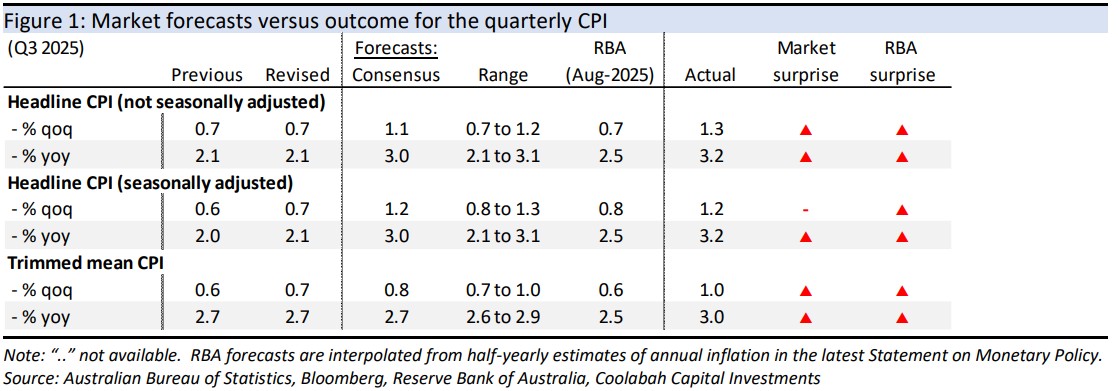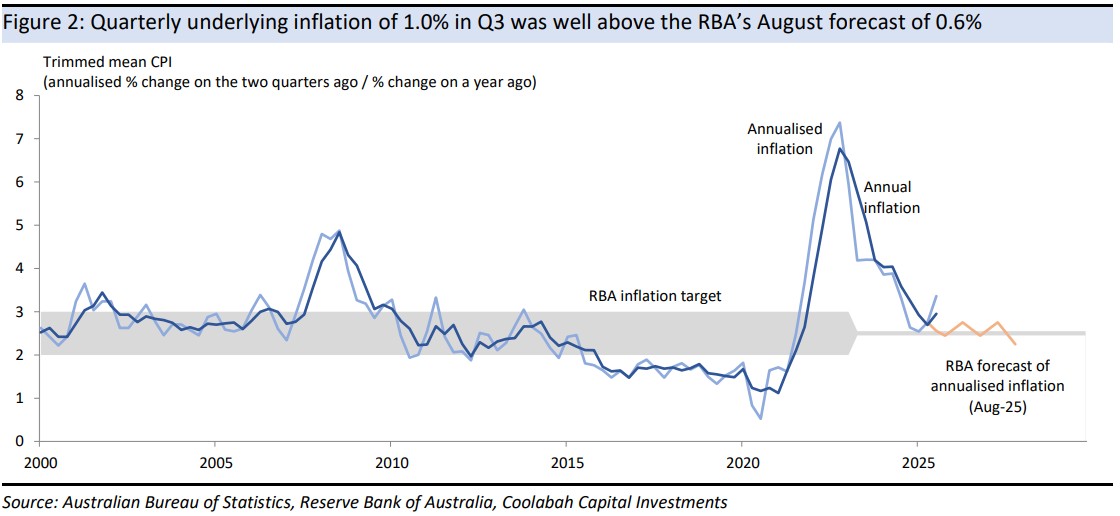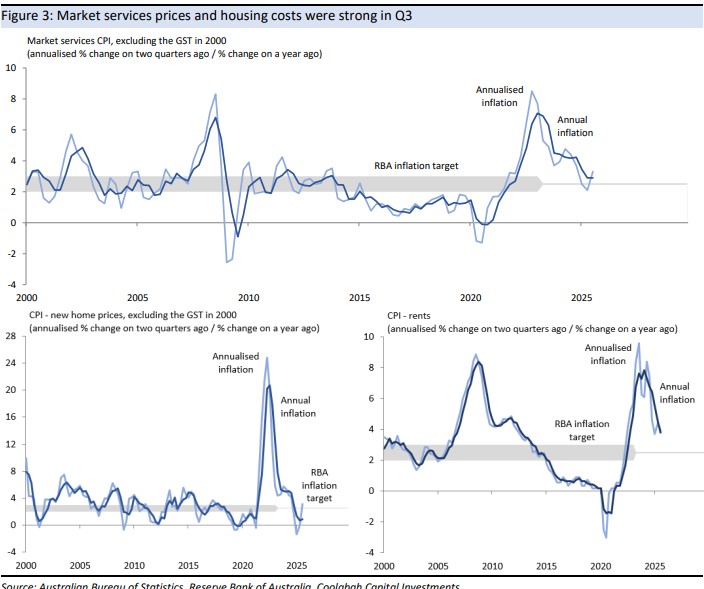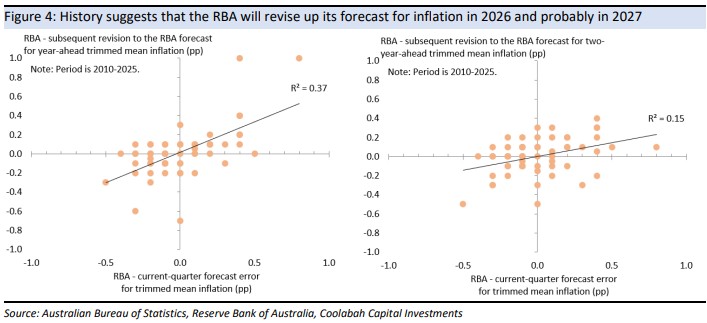Hot inflation puts paid to RBA rate cuts this year
Inflation surged in Q3, beating the RBA’s forecast by a large margin and pointing to interest rates remaining on hold the rest of this year and a much reduced chance of a cut next year.
The RBA’s preferred measure of underlying prices – the trimmed mean CPI – rose by 1.0% in the quarter to be 3.0% higher than a year ago, with Q2 inflation revised up from 0.6% to 0.7%.
The outcome was the largest quarterly increase in prices since early 2024 and had been foreshadowed by recent monthly price data.
The quarterly increase was well above the RBA staff’s August forecast of 0.6% and also above the consensus market estimate of 0.8%.
The detail of the CPI was also unwelcome news for the RBA, with housing costs and market services prices both rising strongly in Q3.
Housing costs are important because they have the largest weight in the basket of goods and services that make up the CPI.
The price of a new home, excluding land – which is the largest single component of the CPI – posted some small falls at the end of last year and earlier this year, but has since picked up, rising by 1.1% in Q3. As for rents, which are the second-largest component of the CPI, they rose by another 1% in the quarter.
Market services are services for which pricing tends to be market-based, with prices generally driven by domestic factors, especially labour costs.
Consistent with the acceleration in trimmed mean inflation, market services prices rose by 1.1% in Q3, just over double the recent quarterly growth rate of 0.5%. This was the largest quarterly increase in a year and kept annual inflation unchanged at 2.9%.
The RBA had been bracing for a high number given the signal from the monthly CPI and Governor Bullock said that this week a 0.9% outcome for the trimmed mean CPI would be “quite a material miss” of “30 basis points”.
As it turned out, the forecast miss was larger at 0.4pp for the quarter and 0.5pp for the year given the small upward revision to prices in Q2.
This is the largest upside surprise for annual inflation since two quarters at the height of COVID and 1992 before that, predating the introduction of the inflation target in 1993.
The RBA staff will finalise their forecasts this week for the RBA board to consider at their policy meeting next week.
Given the much higher starting point, our analysis suggests that the end-2026 forecast could be revised up from 2.6% to around 3%, with the risk that the end-2027 forecast is revised up from 2.5% to either 2.6% or 2.7%.
All this points to the RBA remaining on hold for the rest of this year, such that it can reconsider its outlook in February after the release of the Q4 CPI in late January.
The board does receive the new complete monthly CPI later next month ahead of the December policy meeting, which could provide an early read on whether the surge in inflation in Q3 was temporary.
While recent monthly price data have proven their worth in helping predict today’s outcome, a cautious RBA board will probably think there is no harm in waiting until February to decide if it can resume cutting rates next year if inflation eases in Q4.
The recent rise in unemployment, which unexpectedly jumped to 4.5% in September, complicates the picture for the RBA, although the increase seems mostly statistical noise given that it was not corroborated by other labour market indicators.
While RBA will likely retain a slight easing bias until its February meeting, things could be derailed if inflation proves persistent in Q4.
In such a scenario, the RBA board would be in a bind, needing to reconsider whether it was overly optimistic in believing that the NAIRU had fallen to 4¼% - versus the staff model estimate of 4¾% - and that monetary policy was still tight given the neutral cash rate was judged to be 3¼%.




5 topics

